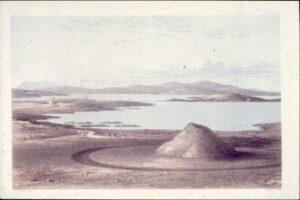
I wonder, as we move into February, where all the archaeology we do is taking us. I’m not qualified to take a global, or even national view. But it is not a bad idea to undertake a little personal reflection. How has ‘my’ archaeology grown in the past year or so? Has it grown at all? Being an archaeologist is fun, and I have stopped wondering whether I should get a ‘proper job’ to bring in the pennies, but I do feel that it is also the sort of job where I’d like to experience some sort of ongoing enrichment.
Well, the good news is that yes, I still feel that my understanding is developing and I’m learning to look at things in new ways. It has been a year in which I have thought about inherent biases. Biases within us and biases within society. No matter how much we try to counter them, it seems that we still judge people differently by all sorts of criteria. Whether it is gender, colour, eyes, hair style, clothes, or any one of a myriad of other elements: I’ve come to realise just how deep these preconceptions are and how deeply they impact on our judgement and thoughts. We can’t avoid them, but we can try to develop an awareness that everything we say and do comes out of a personal stable of weird detail. I ended the year reading Mary Beard’s little manifesto ‘Women and Power’ and it reinforced my increasing awareness that I am, if not preordained, then at least influenced in ways I am only just beginning to appreciate. It is an easy read and thought provoking. If you have not read it yourself then I highly recommend it.
So, that is the internal part. What about other developments. Thankfully, I can say that I’m still acquiring new archaeological information and broadening my knowledge of the world (in particular Scotland). Whereas I used to feel that we were unlikely to develop much of an understanding of the Late Glacial settlement of Scotland due to the paucity of evidence, I now believe that the material traces of this time are considerably greater than we once thought. New finds relating to the period have become almost commonplace over the last few months, alongside the dawning realisation that other finds may well have been missed in old collections. I’m hoping to raise some funds for a new examination of key assemblages. I hesitate to say, re-examination, because sadly, in some cases, prolific lithic scatters were only given cursory attention when they first appeared, due to many reasons: a lack of funds or time; those inbuilt biases suggesting that nothing useful would be found; the pressing needs to examine newer sites. But there is a wealth of information already out there so that we don’t always need to complete new excavation to increase data. And the emerging narrative of Late Glacial Scotland begs a question: when will we start to recognise an earlier narrative, that of the communities who crossed this land as part of their homelands in even earlier times? It is an exciting thought.
Moving to more recent times, I have had many an interesting conversation over details of life in the Neolithic. Unlike the Palaeolithic of the Late Glacial, there is no shortage of ‘information’ here. It is what we make of it that counts. As with any information-rich resource, there is no shortage of suggestions. The variation of interpretation relating to Neolithic Scotland is limited only by the number of those (not just archaeologists) who study it. In the past year, I have come across new approaches, new data, and new arguments. It is a stimulating time to be involved in these matters.
I’m not going to continue with a boring chronological run through the archaeology and history of Scotland. It is clear that the discipline is alive and kicking, and still able to make a contribution to the life of the nation. There are so many ways in which this knowledge contributes to our understanding of ourselves and our neighbours. And (to return to my earlier theme), what I like is the way in which our understanding of the construction of the archaeological narrative is, itself, developing. We have long moved away from the idea that the past is immutable. But only by exploring the processes involved in our narrative-building can we hope to become truly mature in the ‘wisdom’ that we inflict on the rest of the world.
You must be logged in to post a comment.